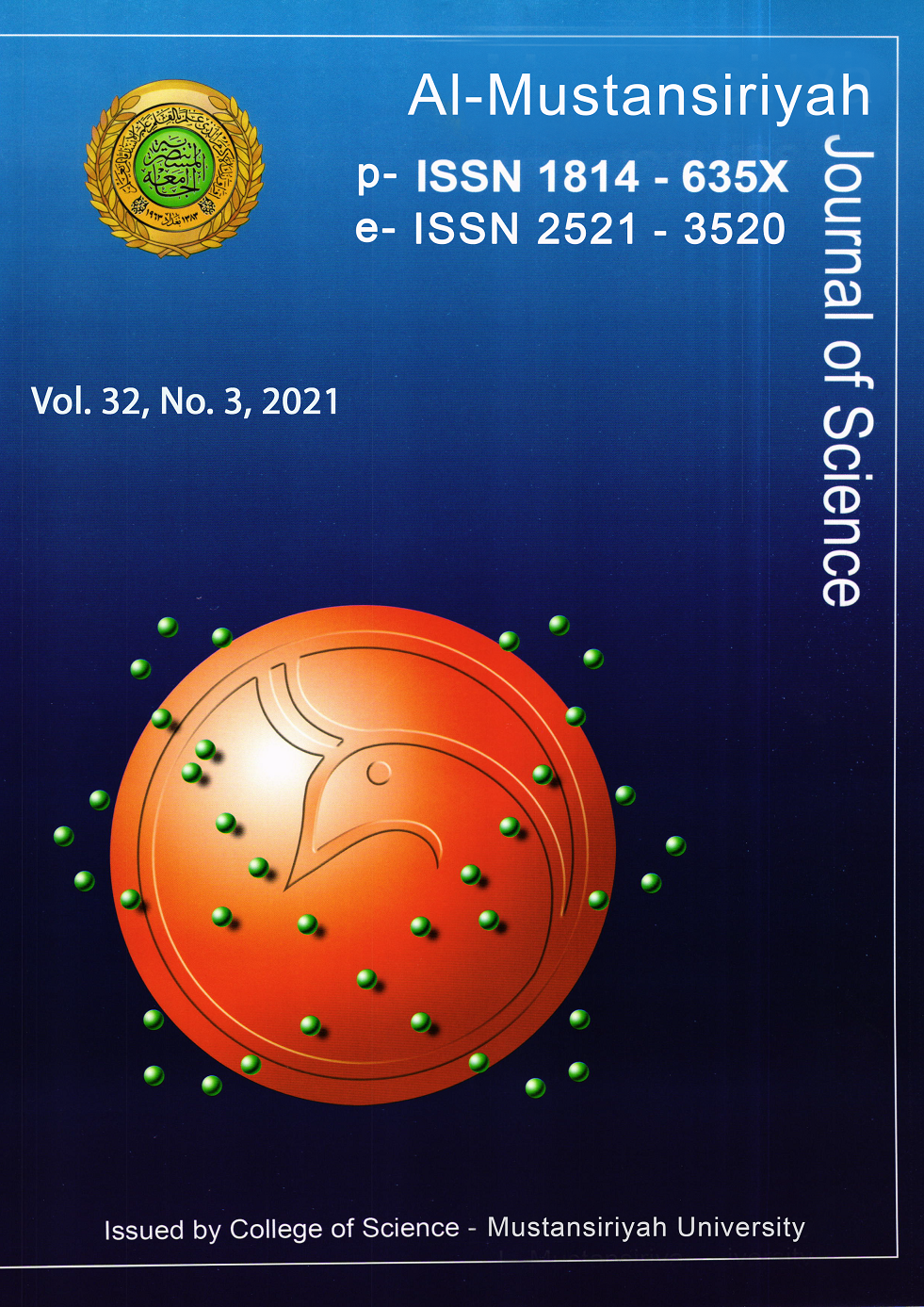Effects of Change PH on The Structural and Optical Properties of Iron Oxide Nanoparticles
DOI:
https://doi.org/10.23851/mjs.v32i3.967Keywords:
iron oxide nanoparticles, Bio-materials, structural and optical properties.Abstract
Iron oxide nanoparticles were made using celery extract by chemical method with change PH. Bio-materials in celery extract synthesized the iron oxide nanoparticles by reducing iron (III) chloride (FeCl3) and then acted as both capping and stabilizing agents. The iron oxide NPs were characterized by XRD, SEM, and UV–vis techniques. The change PH affected the size, shape, and purity of iron oxide NPs. XRD results showed Crystallite size increased from 16.71nm to 21.65nm as pH was increased from 1.6 to 12. SEM images showed that the particle size of (α-Fe2O3) NPs was around 40.06 nm, while increasing PH showed different shapes in the same sample. The particle size became approximately 45.56 and 61.22 nm. UV–vis measurements showed the energy band increased from 3.11eV to 5.11eV. The antimicrobial activity of iron oxide NPs was determined by growth inhibition zones of the negative gram bacteria E. coli, Klebsiella spp, and gram-positive bacteria S. aureus, S. epidermidis, and fungal Candida albicans. The zones for (α-Fe2O3) NPs when PH 1.6 was between (12-13) mm. The zones for (α-Fe2O3) NPs when PH 12 was a little higher between (13-15) mm.
Downloads
References
Fatimah I: Green synthesis of silver nanoparticles using extract of Parkia speciosa Hassk pods assisted by microwave irradiation. Journal of advanced research 2016, 7(6):961-969.
Vasantharaj S, Sathiyavimal S, Senthilkumar P, LewisOscar F, Pugazhendhi A: Biosynthesis of iron oxide nanoparticles using leaf extract of Ruellia tuberosa: antimicrobial properties and their applications in photocatalytic degradation. Journal of Photochemistry and Photobiology B: Biology 2019, 192:74-82.
Abid MA, Kadhim DA: Novel comparison of iron oxide nanoparticle preparation by mixing iron chloride with henna leaf extract with and without applied pulsed laser ablation for methylene blue degradation. Journal of Environmental Chemical Engineering 2020, 8(5):104138.
Nagajyothi P, Pandurangan M, Kim DH, Sreekanth T, Shim J: Green synthesis of iron oxide nanoparticles and their catalytic and in vitro anticancer activities. Journal of Cluster Science 2017, 28(1):245-257.
Demirezen DA, Yıldız YŞ, Yılmaz Ş, Yılmaz DD: Green synthesis and characterization of iron oxide nanoparticles using Ficus carica (common fig) dried fruit extract. Journal of bioscience and bioengineering 2019, 127(2):241-245.
Mody VV, Siwale R, Singh A, Mody HR: Introduction to metallic nanoparticles. Journal of Pharmacy and Bioallied Sciences 2010, 2(4):282.
Bouafia A, Laouini SE: Green synthesis of iron oxide nanoparticles by aqueous leaves extract of Mentha Pulegium L.: Effect of ferric chloride concentration on the type of product. Materials Letters 2020, 265:127364.
Lohrasbi S, Kouhbanani MAJ, Beheshtkhoo N, Ghasemi Y, Amani AM, Taghizadeh S: Green Synthesis of Iron Nanoparticles Using Plantago major Leaf Extract and Their Application as a Catalyst for the Decolorization of Azo Dye. BioNanoScience 2019, 9(2):317-322.
Chauhan S, Upadhyay LSB: Biosynthesis of iron oxide nanoparticles using plant derivatives of Lawsonia inermis (Henna) and its surface modification for biomedical application. Nanotechnology for Environmental Engineering 2019, 4(1):8.
Downloads
Key Dates
Received
Accepted
Published
Issue
Section
License
Copyright (c) 2021 Al-Mustansiriyah Journal of Science

This work is licensed under a Creative Commons Attribution 4.0 International License.
(Starting May 5, 2024) Authors retain copyright and grant the journal right of first publication with the work simultaneously licensed under a Creative Commons Attribution (CC-BY) 4.0 License that allows others to share the work with an acknowledgement of the work’s authorship and initial publication in this journal.






















